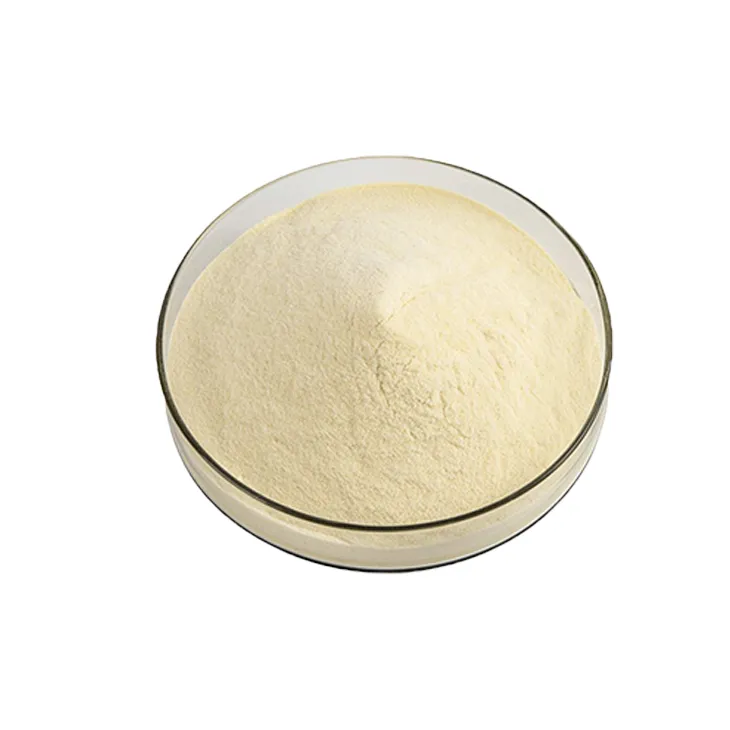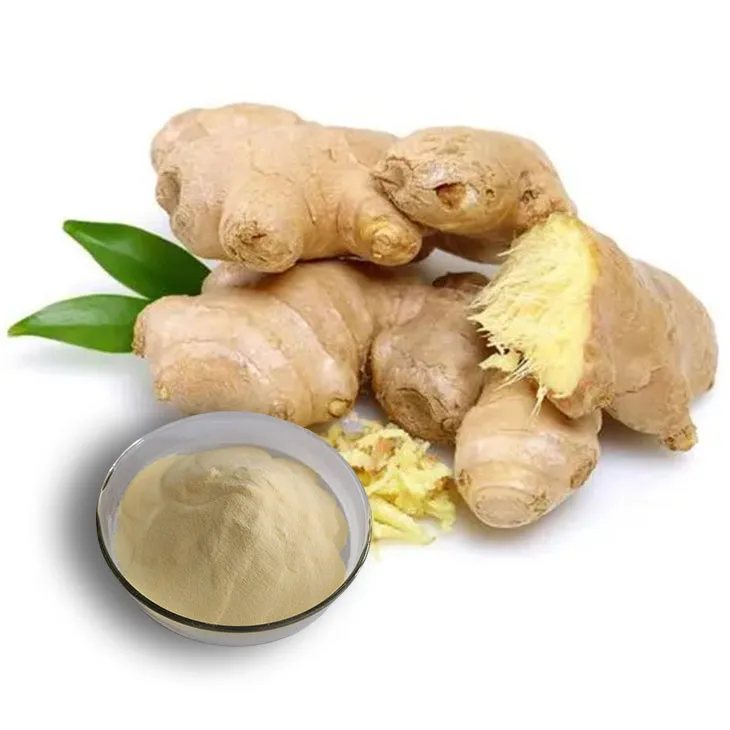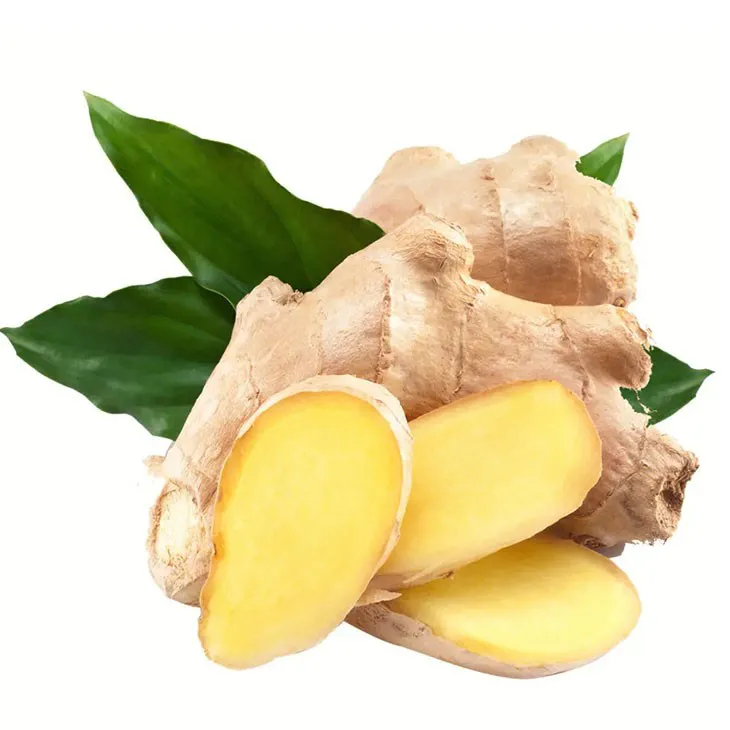- 0086-571-85302990
- sales@greenskybio.com
Organic Supercritical CO₂ Extraction of Ginger Extract.
2024-11-28

1. Introduction
Ginger (Zingiber officinale) has been an important part of human culture for centuries. It is widely used as a spice in cooking, adding a unique flavor and aroma to various dishes. Moreover, ginger has a long - standing reputation in traditional medicine for its numerous health - promoting properties. The extraction of Ginger Extract is crucial to harness its potential benefits. Among the various extraction methods available, supercritical CO₂ extraction stands out as a modern and efficient technique.

2. Supercritical CO₂ Extraction: An Overview
2.1. The Supercritical State of CO₂
Carbon dioxide (CO₂) exists in different states depending on temperature and pressure. In the supercritical state, which is achieved when the temperature and pressure are above its critical point (31.1 °C and 73.8 bar), CO₂ exhibits properties that are intermediate between those of a gas and a liquid. It has a high diffusivity like a gas, allowing it to penetrate into the ginger matrix quickly. At the same time, it has a density similar to that of a liquid, enabling it to dissolve a wide range of compounds effectively.
2.2. Advantages over Traditional Extraction Methods
- Solvent - free or Reduced - solvent Use: Traditional extraction methods often rely on organic solvents such as ethanol or hexane. These solvents can be harmful to the environment and may leave residues in the final product. In supercritical CO₂ extraction, CO₂ is a non - toxic, non - flammable, and inexpensive solvent. Moreover, it can be easily removed from the extract after the extraction process, leaving behind a pure Ginger Extract without solvent residues.
- Selectivity: The solubility of compounds in supercritical CO₂ can be controlled by adjusting the temperature and pressure. This allows for the selective extraction of specific bioactive compounds from ginger. For example, certain conditions can be set to preferentially extract gingerols, the main bioactive components responsible for ginger's pungency and many of its health benefits.
- Mild Operating Conditions: Compared to some traditional extraction methods that may require high temperatures or long extraction times, supercritical CO₂ extraction can be carried out under relatively mild conditions. This helps to preserve the integrity and potency of the bioactive compounds in ginger. High - temperature extraction methods may cause the degradation of heat - sensitive compounds, but supercritical CO₂ extraction minimizes this risk.
- Quality of the Extract: The extract obtained through supercritical CO₂ extraction is of high quality. It has a better flavor profile, closer to that of fresh ginger, as compared to extracts obtained using some other methods. This is important for applications in the food and beverage industry, where the flavor of Ginger Extract can significantly impact the final product.

3. Bioactive Compounds in Ginger
Ginger contains a rich variety of bioactive compounds, which are the main reasons for its wide - ranging applications.
- Gingerols: These are the major pungent compounds in ginger. They have antioxidant, anti - inflammatory, and antimicrobial properties. Gingerols are also believed to play a role in improving digestion and relieving nausea. Different types of gingerols, such as 6 - gingerol, 8 - gingerol, and 10 - gingerol, are present in ginger, and their relative concentrations can vary depending on factors such as the variety of ginger and the growing conditions.
- Shogaols: Shogaols are formed from gingerols during drying or heating processes. They are also bioactive compounds with anti - inflammatory and antioxidant properties. Shogaols are more pungent than gingerols and are thought to have additional health - promoting effects, such as potential anti - cancer properties.
- Zingerone: Zingerone is another important compound in ginger. It has a characteristic warm and spicy flavor. Zingerone also exhibits antioxidant and anti - inflammatory activities and has been studied for its potential role in protecting against neurodegenerative diseases.
- Flavonoids: Ginger contains flavonoids such as Quercetin, kaempferol, and rutin. These flavonoids contribute to ginger's antioxidant and anti - inflammatory properties. They also play a role in protecting cells from oxidative damage and may have beneficial effects on cardiovascular health.

4. The Supercritical CO₂ Extraction Process of Ginger Extract
4.1. Pretreatment of Ginger
Before the extraction process, ginger is usually dried and ground into a fine powder. This increases the surface area of the ginger, facilitating better contact with the supercritical CO₂. The drying process should be carefully controlled to avoid the degradation of bioactive compounds. Different drying methods, such as air drying, freeze - drying, or oven drying, can be used, with freeze - drying being a preferred method as it causes less damage to the bioactive compounds.
4.2. Extraction Parameters
- Temperature: The temperature plays a crucial role in the supercritical CO₂ extraction of ginger extract. Generally, temperatures in the range of 40 - 60 °C are commonly used. At lower temperatures, the solubility of some bioactive compounds may be limited, while at higher temperatures, there is a risk of compound degradation. For example, if the temperature is too high, gingerols may be converted into shogaols, which may not be desirable depending on the intended use of the extract.
- Pressure: Pressure also affects the extraction efficiency and selectivity. Pressures typically range from 100 - 300 bar. Higher pressures generally increase the solubility of compounds in supercritical CO₂, but too high a pressure may also lead to the extraction of unwanted compounds or may require more complex and expensive equipment.
- CO₂ Flow Rate: The flow rate of CO₂ determines the mass transfer rate between the ginger matrix and the supercritical fluid. A higher flow rate can enhance the extraction rate, but it also requires more CO₂ consumption. Therefore, an optimal flow rate needs to be determined based on factors such as the extraction efficiency, cost, and the scale of the extraction process.
- Extraction Time: The extraction time varies depending on the extraction parameters and the desired yield and quality of the extract. Typically, extraction times can range from 1 - 6 hours. Longer extraction times may increase the yield, but may also lead to the extraction of more impurities or the degradation of bioactive compounds.
4.3. Separation and Collection of the Extract
After the extraction process, the supercritical CO₂ containing the dissolved ginger compounds needs to be separated from the extract. This is usually achieved by reducing the pressure, which causes the CO₂ to return to its gaseous state, leaving behind the ginger extract. The separated CO₂ can be recycled and reused in the extraction process, further reducing the cost and environmental impact of the extraction. The collected ginger extract can then be further processed, such as by filtration or concentration, depending on its intended use.
5. Applications of Ginger Extract Obtained by Supercritical CO₂ Extraction
5.1. Food and Beverage Industry
In the food and beverage industry, ginger extract is used in a variety of products. It can be added to ginger - flavored beverages, such as ginger ale, ginger tea, and energy drinks, to enhance the ginger flavor. In the confectionery industry, it is used in ginger - flavored candies, cookies, and cakes. The high - quality extract obtained by supercritical CO₂ extraction provides a pure and natural ginger flavor, which is highly desirable in these products.
5.2. Pharmaceutical and Nutraceutical Industry
Due to its rich content of bioactive compounds, ginger extract has potential applications in the pharmaceutical and nutraceutical industries. It can be used in the development of dietary supplements for various health conditions, such as improving digestion, reducing inflammation, and relieving nausea. The antioxidant properties of ginger extract also make it a potential ingredient in anti - aging and skin - health products.
5.3. Cosmetic Industry
In the cosmetic industry, ginger extract can be incorporated into products such as shampoos, conditioners, and body lotions. Its antioxidant and anti - inflammatory properties can help to protect the skin and hair from damage, and its pleasant aroma can add a natural and refreshing scent to the products.6. Conclusion
Supercritical CO₂ extraction of ginger extract is a promising technique that offers numerous advantages over traditional extraction methods. It allows for the efficient extraction of bioactive compounds from ginger in a more environmentally friendly and selective manner. The high - quality ginger extract obtained through this method has a wide range of applications in the food, pharmaceutical, nutraceutical, and cosmetic industries. As research continues to explore the potential of ginger and its bioactive compounds, supercritical CO₂ extraction is likely to play an increasingly important role in the commercial production of ginger extract.
FAQ:
What are the main bioactive compounds in ginger?
Ginger contains several important bioactive compounds. Some of the main ones include gingerols, which are responsible for the characteristic pungency of ginger. Shogaols, which are formed from gingerols during drying or cooking processes, also possess various biological activities. Additionally, zingerone is another bioactive compound present in ginger.
How does supercritical CO₂ extraction maintain the integrity of ginger extract?
Supercritical CO₂ extraction is a mild process. The supercritical state of CO₂ has properties that allow it to selectively dissolve the bioactive compounds from ginger without causing significant chemical changes. It can operate at relatively low temperatures compared to some traditional extraction methods, which helps in preserving the delicate chemical structures of the bioactive components in ginger, thus maintaining their integrity.
What makes supercritical CO₂ extraction more environmentally friendly than traditional methods?
Traditional extraction methods often rely on the use of organic solvents such as hexane or ethanol. These solvents can be hazardous to the environment if not properly disposed of. In contrast, supercritical CO₂ extraction uses CO₂, which is a non - toxic, non - flammable, and easily available gas. After the extraction process, the CO₂ can be easily recovered and recycled, reducing waste and environmental impact.
What are the steps involved in the supercritical CO₂ extraction of ginger extract?
First, the ginger is prepared, usually by grinding or chopping it into small pieces. Then, the ginger sample is placed in the extraction vessel. CO₂ is pressurized and heated to its supercritical state. The supercritical CO₂ is then passed through the ginger sample, where it selectively dissolves the bioactive compounds. The extract - laden CO₂ is then transferred to a separation vessel where the pressure is reduced, causing the CO₂ to return to its gaseous state and the ginger extract to be collected.
How does the quality of ginger extract obtained by supercritical CO₂ extraction compare to that obtained by other methods?
The ginger extract obtained by supercritical CO₂ extraction is often of higher quality. This is because it contains a higher concentration of the bioactive compounds in their purest form. Traditional methods may introduce impurities or cause degradation of the compounds. Supercritical CO₂ extraction can also better preserve the flavor and aroma of ginger, which are important aspects of the quality of the extract.
Related literature
- Supercritical Fluid Extraction of Ginger: Process Optimization and Chemical Composition Analysis"
- "Advances in Supercritical CO₂ Extraction of Bioactive Compounds from Ginger"
- "The Potential of Supercritical CO₂ Extraction for High - Quality Ginger Extract Production"
- ▶ Hesperidin
- ▶ citrus bioflavonoids
- ▶ plant extract
- ▶ lycopene
- ▶ Diosmin
- ▶ Grape seed extract
- ▶ Sea buckthorn Juice Powder
- ▶ Beetroot powder
- ▶ Hops Extract
- ▶ Artichoke Extract
- ▶ Reishi mushroom extract
- ▶ Astaxanthin
- ▶ Green Tea Extract
- ▶ Curcumin Extract
- ▶ Horse Chestnut Extract
- ▶ Other Problems
- ▶ Boswellia Serrata Extract
- ▶ Resveratrol Extract
- ▶ Marigold Extract
- ▶ Grape Leaf Extract
- ▶ blog3
- ▶ blog4
-
Nature's best vitamin D3.
2024-11-28
-
The best velvet antlers in 2024.
2024-11-28
-
Alfalfa Meal
2024-11-28
-
Jujube Extract
2024-11-28
-
Black Rice Extract
2024-11-28
-
Europen Bilberry Extract
2024-11-28
-
Diosmin
2024-11-28
-
Eyebright Extract
2024-11-28
-
Green Tea Extract
2024-11-28
-
Lotus leaf extract
2024-11-28
-
Saffron Extract Powder
2024-11-28
-
Maitake Mushroom Extract
2024-11-28





















